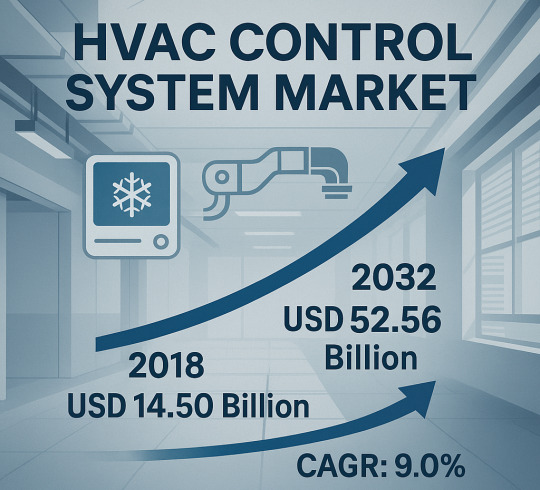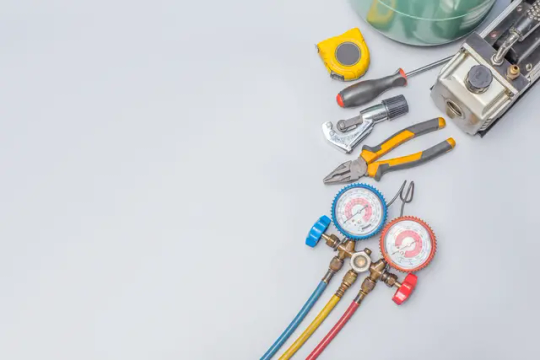#SmartHVAC
Explore tagged Tumblr posts
Text
MeshTek: Building Intelligent Worlds Through IoT Apps

MeshTek pioneers next-gen IoT app development Company with powerful dashboards that unite diverse smart systems—from wearable health tech to industrial automation. Our solutions seamlessly integrate AI, Bluetooth mesh, and real-time analytics to deliver connected ecosystems designed for smart cities, efficient industries, and future-ready environments. Experience innovation in action through MeshTek’s expertly crafted IoT applications.
#MeshTek#IoTAppDevelopmentCompany#SmartTechnology#BluetoothMesh#SmartCitySolutions#IndustrialAutomation#AIinIoT#WearableTech#SmartHVAC#ConnectedDevices#MeshNetwork#IoTPlatform#IoTApps#TechInnovation#EdgeComputing#IoTAnalytics#FutureTech#SmartInfrastructure#IoTSolutions#MeshTekInnovation
1 note
·
View note
Text
🏢 Our team ensures energy efficiency and year-round temperature control.
💼 From homes to industries we bring comfort and reliability.👉design
0 notes
Text

Global HVAC Control System Market Size, Share, Trends & Forecast 2018–2032
🔍 What is the Global HVAC Control System Market Size?
The global HVAC control system market size was valued at USD 14.50 billion in 2018 and is projected to grow to USD 52.56 billion by 2032, exhibiting a robust CAGR of 9.0% during the forecast period.
🌍 Which Region Dominates the HVAC Control System Market?
Asia Pacific dominated the HVAC control system market with a market share of 49.17% in 2018. The HVAC control systems market in the U.S. is also expected to grow significantly, reaching an estimated USD 10.21 billion by 2032, driven by the surge in smart building automation for residential and commercial applications.
🌬️ Why is the HVAC Control System Market Growing?
The increasing adoption of building automation control systems (BACS) is driving demand for advanced HVAC controls. Consumers are seeking low-cost, energy-efficient solutions, while governments worldwide support smart city initiatives to promote sustainable, intelligent buildings. For example, India’s Smart Cities Mission is accelerating the rollout of smart infrastructure across urban spaces.
📌 How is the Market Segmented?
By Product:
Traditional HVAC Control Systems
Smart HVAC Control Systems
By Application:
Residential
Commercial
Industrial
💡 What are the Latest & Future Trends?
Trends like IoT integration, remote monitoring, and AI-driven smart thermostats are transforming HVAC control systems. Expect increased demand for systems that improve comfort, energy efficiency, and sustainability as smart cities expand globally.
👉 Read the full report here: https://www.fortunebusinessinsights.com/hvac-control-system-market-102448
#HVAC#HVACControls#SmartBuilding#BuildingAutomation#SmartHVAC#EnergyEfficiency#SmartCities#MarketTrends#BuildingTechnology#SustainableLiving
0 notes
Text
Energy Efficiency Focus
Looking to cut energy costs this year?
You may want to consider upgrading to a heat pump. It’s a single system that provides both heating and cooling, and it’s designed to be highly efficient.
Not sure how it compares to central air? That’s where Davis & Son comes in.
✅ Honest recommendations ✅ Professional HVAC system design ✅ Energy audits + installation
📞 (417) 235-6688 🌐 https://davisandson.net
#EnergyEfficiency #HVACTechnician #ClimateControlExpert #HeatPumpInstaller #FurnaceRepairTechnician #MissouriHVAC #SmartHVAC

#EnergyEfficiency#HVACTechnician#ClimateControlExpert#HeatPumpInstaller#FurnaceRepairTechnician#MissouriHVAC#SmartHVAC#hvac#hvac maintenance#hvac repair#hvac services#air conditioning#hvac contractor#heating
0 notes
Text
HVAC systems are the equipment used for heating, ventilation, and air conditioning, while HVAC automation involves using smart controls to manage these systems efficiently. The key difference is that automation adds intelligent monitoring and control, improving energy efficiency, comfort, and system performance without constant manual adjustments.
0 notes
Text

Grilletech Manual Volume Control Dampers offer dependable and efficient airflow regulation for modern HVAC systems. Built with a durable galvanised steel frame, also available in aluminium, stainless steel, or mild steel, they adhere to international standards such as SMACNA/DW 144. The dampers feature precision-engineered extruded aluminium aerofoil blades that promote smooth, low-turbulence airflow and minimise pressure loss. A robust manual linkage mechanism enables easy adjustment for precise zone control. Designed to boost energy efficiency, system longevity, and occupant comfort, these dampers provide a flexible, low-maintenance solution for manual or automated airflow control across a wide range of applications.
For more details: WhatsApp : +973 77083090 ☎️ +973 17111023 | +973 17111024 ✉️ [email protected] 🌐 www.grilletechbahrain.com
#GrilleTech#HVAC#AirflowControl#EnergyEfficiency#ZoneControl#VCD#Grilletech#Ventilation#BuildingSolutions#SmartHVAC#AirQuality#SystemDurability#HVACPerformance#SustainableLiving#BuyNow#AirFlowControl#HVACSolutions#VolumeControlDampers
0 notes
Text
Automotive HVAC Market Future Trends Driven by Electrification, Climate Control Innovations, and Sustainability Goals
The automotive HVAC market is undergoing transformative change, spurred by advancements in electric mobility, rising consumer expectations for cabin comfort, and the need for energy-efficient climate control systems. HVAC systems, once considered standard features, are now playing a central role in vehicle design as automakers seek to enhance passenger experience, optimize energy use, and reduce emissions. As we look toward the future, key trends are emerging that will shape the evolution of automotive HVAC technology and market dynamics.

One of the most significant drivers of future trends in this market is the rise of electric vehicles (EVs) and hybrid electric vehicles (HEVs). Unlike internal combustion engine (ICE) vehicles, EVs lack a traditional engine-generated heat source, necessitating innovative HVAC solutions. This shift has led to the development of energy-efficient systems such as heat pumps, PTC (Positive Temperature Coefficient) heaters, and electric compressors. These technologies help maintain cabin temperature without compromising the battery range—an essential factor in EV performance and user satisfaction.
Moreover, the future will witness greater integration of HVAC systems with battery thermal management. In EVs, controlling battery temperature is crucial to performance, charging speed, and longevity. Modern HVAC units are increasingly designed to work in tandem with battery cooling and heating systems, forming an integrated thermal management architecture. This development is fostering new product opportunities for manufacturers who can design smart, multi-functional HVAC units that optimize both cabin and battery environments.
Another emerging trend is the adoption of smart HVAC systems with advanced sensors and AI-based controls. Future vehicles will offer personalized climate settings based on passenger preferences, weather conditions, and driving behavior. Sensors will monitor humidity, CO₂ levels, cabin occupancy, and air quality, allowing the HVAC system to automatically adjust airflow, temperature, and filtration levels. This evolution aligns with broader trends in vehicle personalization and enhances both comfort and efficiency.
Air purification and filtration technologies are also gaining traction. Growing concerns about air pollution and in-cabin air quality are driving demand for HVAC systems equipped with HEPA filters, ionizers, and PM2.5 sensors. These features are becoming particularly important in urban markets and regions with high pollution levels. As health consciousness grows, air quality will become a major selling point for automotive HVAC systems in both the luxury and mass-market segments.
Another major trend is the push toward lightweight and compact HVAC components. To meet fuel efficiency and range requirements, automakers are focusing on reducing the weight and size of all vehicle components, including HVAC units. Innovations in materials, compact design, and integrated functionality are enabling HVAC systems to deliver superior performance with reduced energy consumption and space requirements. This trend is especially relevant for electric and compact city vehicles where every cubic inch counts.
Sustainability is becoming a dominant theme in the automotive HVAC market. The transition to eco-friendly refrigerants is a key development in line with global climate change goals. Regulatory bodies are phasing out high-GWP (Global Warming Potential) refrigerants and promoting alternatives like R-1234yf, which has a much lower environmental impact. HVAC system manufacturers must adapt their designs to comply with these regulations while maintaining efficiency and safety.
In addition to sustainable refrigerants, the circular economy approach is influencing product development. Recyclable materials, energy-efficient manufacturing processes, and longer product lifecycles are being emphasized. Tier-1 suppliers are working closely with OEMs to ensure that HVAC systems align with vehicle sustainability goals and environmental certifications.
From a regional perspective, Asia-Pacific is expected to lead the HVAC market’s future growth, driven by rising vehicle production, increasing demand for comfort features, and rapid urbanization. China and India, in particular, are investing heavily in EV infrastructure and emission-reduction policies, creating a favorable environment for advanced HVAC technologies. Europe and North America will continue to focus on premium offerings, energy efficiency, and sustainability, shaping high-value segments of the market.
Technological convergence will further shape the HVAC landscape. Integration with connected vehicle platforms will allow remote HVAC control through mobile apps and voice assistants. Pre-conditioning of the cabin before the driver enters, remote diagnostics, and over-the-air updates will enhance user experience and create added value for automakers.
The autonomous vehicle segment presents unique HVAC challenges and opportunities. Without driver intervention, maintaining passenger comfort becomes critical. HVAC systems in autonomous vehicles must intelligently manage airflow, zoning, and air quality based on AI predictions and real-time sensor feedback. These smart systems will redefine climate control as a core feature of self-driving cars.
In conclusion, the automotive HVAC market is set for a future shaped by innovation, electrification, and sustainability. Manufacturers that embrace smart technology, energy-efficient designs, and environmental responsibility will be best positioned to lead. As consumers demand greater comfort, cleaner air, and smarter systems, the HVAC industry will evolve into a strategic pillar of next-generation vehicle design and performance.
0 notes
Text
🚨 The HVAC world is evolving fast. Are you ready to compete in 2025 and beyond?
In just 60 seconds, see why traditional operations won't cut it anymore:
🧾 No more paper clutter
🔋 Smart tech, green installs, and predictive maintenance are the new norm
📉 Techs are hard to keep unless your tools keep up
📲 Service Pro911 is the mobile command center that brings it all together
✅ FREE Android App
✅ FREE Web Dashboard
✅ Syncs with QuickBooks & Google Calendar
✅ Estimates, invoices, scheduling, CRM done in seconds
📲 Get Service Pro911 on Google Play today
🌐 Or log in at www.servicepro911.com
🔧 Fast. Transparent. Fully Mobile.
Let your customers see the difference before your competitors do.
To read the full blog visit our website:
https://servicepro911.com/how-the-hvac-market-will-change-in-the-next-five-years/
0 notes
Text
#CommercialHVAC#HVACInstallation#HVACTechnician#BuildingSystems#MechanicalContractor#EnergyEfficiency#HVACDesign#ConstructionGuide#FacilityManagement#HVACTips#DuctworkDesign#HVACControls#HVACCommissioning#GreenBuilding#SmartHVAC
0 notes
Text

Master the essentials of commercial HVAC system installation with this comprehensive guide. From planning and equipment selection to ductwork, controls, and final commissioning, this resource walks contractors, technicians, and facility managers through every step of a successful install. Ensure energy efficiency, code compliance, and peak performance in your next commercial project.
#CommercialHVAC#HVACInstallation#HVACTechnician#BuildingSystems#MechanicalContractor#EnergyEfficiency#HVACDesign#ConstructionGuide#FacilityManagement#HVACTips#DuctworkDesign#HVACControls#HVACCommissioning#GreenBuilding#SmartHVAC
0 notes
Text
Smart Building Automation Technologies Market - Poised For Disruptive And Explosive Growth
According to Market Statistix, the Smart Building Automation Technologies Market revenue and growth prospects are expected to grow at a significant rate during the analysis period of 2024-2032, with 2023 as the base year. Smart Building Automation Technologies Market research is an ongoing process. Regularly monitor and evaluate market dynamics to stay informed and adapt your strategies accordingly. As a market research and consulting firm, we offer market research reports that focus on major parameters, including Target Market Identification, Customer Needs and Preferences, Thorough Competitor Analysis, Market Size and market Analysis, and other major factors. In the end, we provide meaningful insights and actionable recommendations that inform decision-making and strategy development.
The Smart Building Automation Technologies Market is projected to experience steady growth, expanding at a CAGR of 9.9% over the forecast period.
Who are the key players operating in the industry?
Johnson Controls, Larsen & Toubro Limited, Siemens AG, Honeywell International Inc., Rockwell Automation Inc., Schneider Electric, ABB, General Electric, Eaton Corporation, Azbil Corporation
Request a sample on this latest research report Smart Building Automation Technologies Market spread across 100+ pages and supported with tables and figures is now available @ https://www.marketstatistix.com/sample-report/global-smart-building-automation-technologies-market
Smart Building Automation Technologies Market Overview and Insights:
Market Statistix is solidifying its reputation as a leading market research and consulting service provider, delivering data-driven insights that help businesses make informed strategic decisions. By focusing on detailed demand analysis, accurate market forecasts, and competitive evaluations, we equip companies with the essential tools to succeed in an increasingly competitive landscape. This comprehensive Smart Building Automation Technologies market analysis offers a detailed overview of the current environment and forecasts growth trends through 2032. Our expertise enables clients to stay ahead of the curve, providing actionable insights and competitive intelligence tailored to their industries.
What is included in Smart Building Automation Technologies market segmentation?
The report has segmented the market into the following categories:
Segment by Type: Security, Life Safety, Facility Management, Building Energy Management
Segment by Application: Residential, Commercial, Industrial
Smart Building Automation Technologies market is segmented by company, region (country), by Type, and by Application. Players, stakeholders, and other participants in the Smart Building Automation Technologies market will be able to gain the upper hand as they use the report as a powerful resource. The segmental analysis focuses on revenue and forecast by Type and by Application in terms of revenue and forecast for the period 2019-2032.
Have a query? Market an enquiry before purchase @ https://www.marketstatistix.com/enquiry-before-buy/global-smart-building-automation-technologies-market
Competitive Analysis of the market in the report identifies various key manufacturers of the market. We do company profiling for major key players. The research report includes Competitive Positioning, Investment Analysis, BCG Matrix, Heat Map Analysis, and Mergers & Acquisitions. It helps the reader understand the strategies and collaborations that players are targeting to combat competition in the market. The comprehensive report offers a significant microscopic look at the market. The reader can identify the footprints of the manufacturers by knowing about the product portfolio, the global price of manufacturers, and production by producers during the forecast period.
As market research and consulting firm we offer market research report which is focusing on major parameters including Target Market Identification, Customer Needs and Preferences, Thorough Competitor Analysis, Market Size & Market Analysis, and other major factors.
Purchase the latest edition of the Smart Building Automation Technologies market report now @ https://www.marketstatistix.com/buy-now?format=1&report=98
The Smart Building Automation Technologies market research study ensures the highest level of accuracy and reliability as we precisely examine the overall industry, covering all the market fundamentals. By leveraging a wide range of primary and secondary sources, we establish a strong foundation for our findings. Industry-standard tools like Porter's Five Forces Analysis, SWOT Analysis, and Price Trend Analysis further enhance the comprehensiveness of our evaluation.
A Comprehensive analysis of consumption, revenue, market share, and growth rate is provided for the following regions:
-The Middle East and Africa region, including countries such as South Africa, Saudi Arabia, UAE, Israel, Egypt, and others.
-North America, comprising the United States, Mexico, and Canada.
-South America, including countries such as Brazil, Venezuela, Argentina, Ecuador, Peru, Colombia, and others.
-Europe (including Turkey, Spain, the Netherlands, Denmark, Belgium, Switzerland, Germany, Russia, the UK, Italy, France, and others)
-The Asia-Pacific region includes Taiwan, Hong Kong, Singapore, Vietnam, China, Malaysia, Japan, the Philippines, South Korea, Thailand, India, Indonesia, and Australia.
Browse Executive Summary and Complete Table of Content @ https://www.marketstatistix.com/report/global-smart-building-automation-technologies-market
Table of Contents for the Smart Building Automation Technologies Market includes the following points:
Chapter 01 - Smart Building Automation Technologies Executive Summary
Chapter 02 - Market Overview
Chapter 03 - Key Success Factors
Chapter 04 - Smart Building Automation Technologies Market – Pricing Analysis Overview
Chapter 05 - Overview of the History of the Smart Building Automation Technologies Market
Chapter 06 - Smart Building Automation Technologies Market Segmentation [e.g. Type (Security, Life Safety, Facility Management, Building Energy Management), Application (Residential, Commercial, Industrial)]
Chapter 07 - Analysis of Key and Emerging Countries in the Smart Building Automation Technologies
Chapter 08 - Smart Building Automation Technologies Market Structure and Value Analysis
Chapter 09 - Competitive Landscape and Key Challenges in the Smart Building Automation Technologies Market
Chapter 10 - Assumptions and Abbreviations
Chapter 11 - Market Research Approach for Smart Building Automation Technologies
About Market Statistix:
Market Statistix is an expert in the area of global market research consulting. With the aid of our ingenious database built by experts, we offer our clients a broad range of tailored Marketing and Business Research Solutions to choose from. We assist our clients in gaining a better understanding of the strengths and weaknesses of various markets, as well as how to capitalize on opportunities. Covering a wide variety of market applications, We are your one-stop solution for anything from data collection to investment advice, covering a wide variety of market scopes from digital goods to the food industry.
Contact Information:
Market Statistix
Media & Marketing Manager
Call: +91 9067 785 685
Email: [email protected]
Website: www.marketstatistix.com
#SmartBuildingAutomation#BuildingManagementSystem#EnergyEfficientBuildings#IoTInBuildings#SmartHVAC#LightingControlSystems#AutomatedSecuritySystems#GreenBuildingTech#SmartInfrastructure#BASMarket#BuildingAutomationSolutions#SmartSensors#IntelligentBuildings
0 notes
Text
Control Your 2025 HVAC with ALEXA, GOOGLE & HOMEKIT!

Tired of adjusting thermostats manually? Dynamic Heat and Cool reveals how next-gen HVAC systems deliver voice-activated comfort in Hamilton homes:
⚡ Smart Integration Perks:
"Alexa, set basement to 68°" → Whole-home zoning via voice
"Hey Google, eco mode when away" → Automatic energy savings
Apple HomeKit scenes → "Goodnight" turns down heat + locks doors
Remote adjustments → Fix temperature mistakes from work
🔑 Why Choose a Pro Install?
"DIY smart thermostats often underperform! New 2025 systems need expert calibration for seamless AI integration."
✅ Your Local Advantage:
As your trusted heating company near me, we:
Install compatible Carrier/Bryant systems
Configure voice assistants & automations
Troubleshoot connectivity issues
Maintain peak efficiency year-round
Dynamic Heat and Cool
Hamilton’s Smart Heating Company Near Me
📞 24/7 Support | 🔧 Professional Integration
#HeatingCompanyNearMe#SmartHVAC#HamiltonHeating#AlexaHVAC#GoogleHome#HomeKit#DynamicHeatAndCool#EnergyEfficient#HVAC2025#FutureOfComfort#OntarioTech#SmartHome#BurlingtonHeating#VoiceControl#HVACUpgrade
0 notes
Text
Whether it's the chill of winter or summer heat waves, your home's comfort starts with the right HVAC team. Discover how expert HVAC contractors improve air quality, energy efficiency, and peace of mind — all while saving you money. 🔥❄️ Explore why Perfect Mechanical Solutions is Canada’s trusted choice for year-round comfort.
#HVACContractors#IndoorComfort#HeatingAndCooling#HVACCanada#PerfectMechanicalSolutions#HomeAirQuality#SmartHVAC#EcoFriendlyHeating#AirConditioningService#DuctworkInstallation#FurnaceRepairCanada
0 notes
Text

Omron D6T-8L-09 Digital 8-Zone Temperature Sensor – I2C Output PCB Mount
The Omron D6T-8L-09 is an advanced 8-zone digital temperature sensor with non-contact IR sensing capability. Featuring ±1.5°C accuracy, I2C interface, and a compact PCB mount design, it delivers reliable real-time data ideal for smart automation, HVAC, and occupancy detection systems.
Key Features:
Multi-Zone Sensing: 8 Channels Accuracy: ±1.5°C Output: Digital (I2C Interface) Operating Temp: 0°C to +60°C Current: 5 mA Mounting: PCB Mount Omron Quality – RoHS Compliant
📦 Bulk orders available – DM us or call to get the best price!
📞 Contact Today : +919810987429
📥 Enquire Now : [email protected]
#OmronD6T#8ZoneSensor#TemperatureSensor#I2CSensor#PCBMountSensor#NonContactSensor#OccupancyDetection#SmartHVAC#DigitalTempSensor#OmronElectronics#IRSensor#AutomationSensor
0 notes
Text
Everything You Need to Know to Stay Cool and Save Money

Air conditioning repair isn’t just about fixing a machine—it’s about comfort, health, and energy efficiency. Whether you’re sweating through a summer heatwave or trying to figure out why your electric bill has skyrocketed, a faulty AC unit can make life miserable. This guide will walk you through every angle of air conditioning repair, offering tips, insights, and actionable advice to keep your system running smoothly all year long.
How Air Conditioning Systems Work
The Cooling Cycle Explained
At its core, an air conditioner works by removing heat from your indoor environment and releasing it outdoors. This is done through a closed-loop system involving refrigerant. Here’s a quick breakdown:
The compressor pumps refrigerant through the system.
The evaporator coil absorbs indoor heat.
The condenser coil releases that heat outdoors.
Fans help circulate air across the coils.
All of these components must work in harmony. When one fails, the entire system struggles, often leading to warm air blowing through the vents or loud operational noises.
Types of Air Conditioning Units
Understanding what type of AC unit you own is crucial to diagnosing issues and deciding on repair vs. replacement. The main types include:
Central Air Conditioners – Most common in homes with duct systems.
Ductless Mini-Split Systems – Ideal for zoned cooling and energy efficiency.
Window Units – Cost-effective but limited in scope.
Portable ACs – Flexible but generally less powerful.
Hybrid Systems – Combine electric cooling and gas heating for efficiency.
Each unit has its strengths, weaknesses, and specific repair challenges.
Common Signs Your AC Needs Repair
Strange Noises or Smells
If your AC starts making grinding, banging, or hissing noises, it’s a red flag. These sounds often point to loose components, motor issues, or refrigerant leaks. Smells are equally telling—a musty odor can signal mold in your ducts, while a burning smell may indicate electrical problems.
Poor Airflow or Warm Air
When cool air becomes a rarity and airflow seems weak, it usually means there’s a clog, failing compressor, or malfunctioning fan. These problems not only affect comfort but also signal bigger mechanical issues.
Moisture or Leaks Around the Unit
Any sign of water pooling near your AC unit could mean a clogged condensate drain or refrigerant leak. While water leaks are messy, refrigerant leaks are hazardous to health and the environment.
Diagnosing Common AC Problems
Refrigerant Leaks
Low refrigerant levels will cause your unit to lose cooling power and efficiency. This issue needs a licensed technician, as refrigerants must be handled according to EPA regulations.
Frozen Coils
If you notice ice buildup on your unit, it could be due to restricted airflow or low refrigerant. Frozen coils can lead to system failure if not addressed quickly.
Thermostat Malfunctions
Sometimes the issue isn’t with the AC itself but with the thermostat. If the unit won’t turn on or doesn’t reach the set temperature, a faulty thermostat could be to blame.
DIY Troubleshooting Before Calling a Pro
Check the Thermostat Settings
Make sure the thermostat is set to “cool” and that the temperature setting is lower than the room temperature. Sometimes a simple setting adjustment can fix the issue.
Replace or Clean the Air Filter
A clogged air filter can restrict airflow, overwork your system, and reduce cooling efficiency. Replacing the filter is one of the easiest and most effective DIY tasks.
Inspect the Circuit Breaker
A tripped breaker can shut down your AC completely. If your unit won’t turn on, check your breaker box before assuming a bigger problem.
When to Call a Professional
Complex Repairs and Safety Risks
If you suspect refrigerant leaks, electrical issues, or problems with the compressor, it’s time to call a professional. These components require expert handling and diagnostic tools.
Regular Maintenance Checks
Hiring an HVAC technician for annual inspections can prevent major issues before they start. These check-ups typically include cleaning coils, checking refrigerant levels, and tightening electrical connections.
How Much Does AC Repair Cost?
Factors Affecting Repair Costs
The cost of repair depends on multiple factors:
Type of AC unit
Age of the system
Nature of the problem
Labor and parts availability
Smart HVAC System 21024 Sherman Way, Unit A2, Canoga Park, CA 91303 (818) 805-2440
#canogaparkservices#cleanair#homemaintenance#lintfreeliving#fireprevention#dryerventcleaning#homesafety#losangeleshvac#smarthvac#energyefficiency
0 notes
Text
HVAC systems are the equipment used for heating, ventilation, and air conditioning, while HVAC automation involves using smart controls to manage these systems efficiently. The key difference is that automation adds intelligent monitoring and control, improving energy efficiency, comfort, and system performance without constant manual adjustments.
0 notes